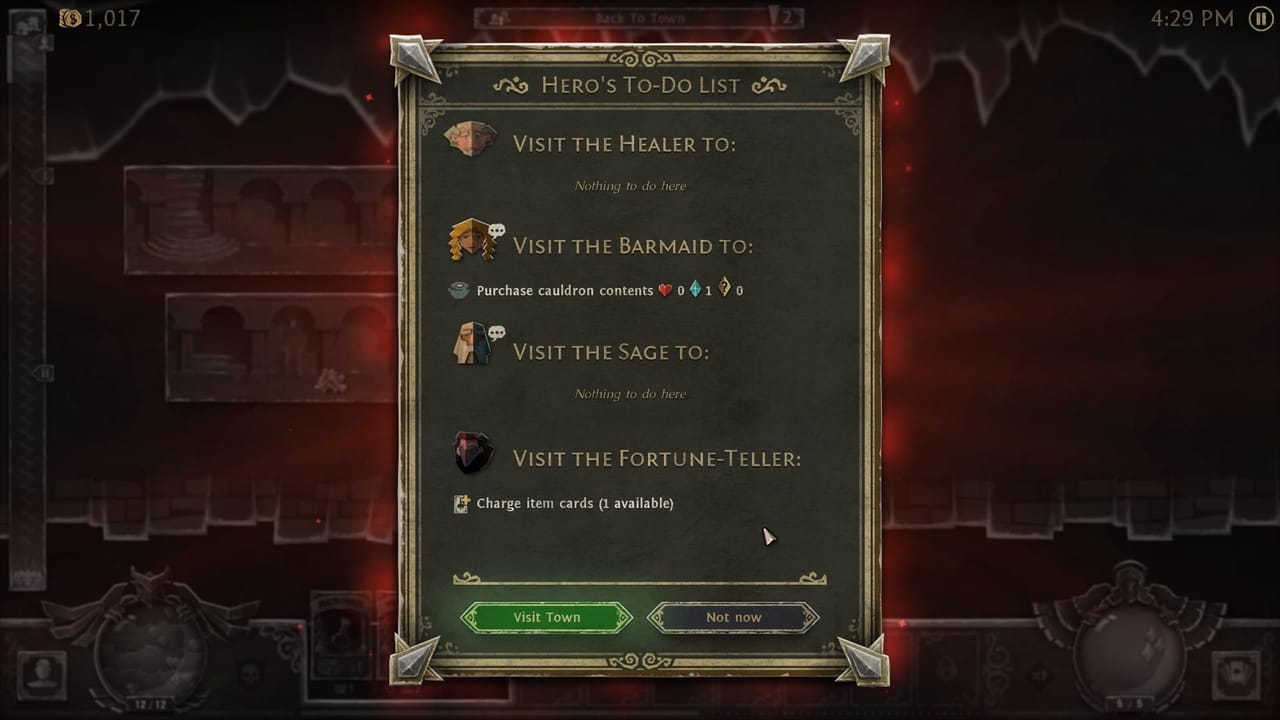Imagine you’re a kid again and it’s story time. Your parent or guardian is opening up the hard, glossy cover to another pop-up storybook. Now pretend that the cover of this book has “Diablo” written across it and a simplified, cartoon version of that game’s box art spread out. This would be a tale of Tristram and all the horrors that have beset it, but Blizzard’s world contains too much violence and gore for the little ones. Thus, every aspect is simplified and made lighter; all the demons appear as cute little drawings, and all the dungeons appear as papercraft scenery. The story, too, is told with a more whimsical air. See: it’s Diablo storytime. This is Book of Demons.

A simplified, pop-up book version of Diablo. It’s not “for kids,” as anyone could enjoy it, and can be a very difficult game. But the aesthetics and gameplay make Book of Demons about as clean and accessible a Diablo-like as you could have while still retaining the possibility of challenge. From the startup menu to the town hub and the dungeon, the user interface is understandable and aesthetically pleasing.
Take the movement. While viewing the town, you simply click on any character - say, the barmaid - to begin dialogue, or click the church in the background to delve into the dungeon. While in the dungeon, each level is displayed one above the next, and you select one by clicking on it. Now switched to an overhead view, your character binds to single pathways and automatically moves up or down a path. You need only input a new direction when you come to crossroads. While you move along, there is an auto-attack that slashes monsters when they come in range. Otherwise, you click on monsters, or click on objects, like vases and sarcophagi. When you clear all the enemies in a dungeon's level, you can click a stair icon to be taken straight to that level's exit. The movement and interface along with it are each very easy to grasp.
Other features aid the player. There's one called "Flexiscope" that allows you to adjust, in minutes, how long a given level or gameplay chunk will be. Another I loved was the "Hero's To-Do List." This window conveniently shows you what tasks you can do with each NPC between levels of the dungeon. Not sure if you need to visit the Fortune Teller again? This will show you if you have any cards you could charge or upgrade there. Every piece of the play experience in Book of Demons works to give you as clean, comfortable, and understandable a play experience as possible.

Yet, Book of Demons retains its difficulty, allowing for in-depth gameplay. For one, there's a card system. Instead of picking up weapons, armor, and spells, you collect cards and then equip these in slots along the bottom of the screen. I have not seen a card for a specific weapon or armor piece. Instead, each card has a buff for your character with either an active or a passive trait, like giving you a greater chance to block projectiles or tossing a projectile at enemies. (The only standard items I have seen represented on cards are health and mana potions.) You can upgrade cards you have with Moon Cards and charge them with Sun Cards at the Fortune Teller's place to make them more powerful. Digging into this card system is where players can find the gameplay depth.
You can also make it as difficult as you'd like. There are three difficulties to choose from: Casual, Normal, and Roguelike. I am playing on Normal and approaching the first quest boss, The Cook, have encountered a fair amount of challenge. Layers of difficulty are added to the monsters for when you combat them. You simply click on all the basic monsters, but it starts to get more interesting: if a monster has a shield icon, you must click only that until it breaks. Monsters with golden shields become temporarily immune when you damage them and, during immune phases, can spawn other monsters. Then there are the pesky undead who can poison you – I hated becoming poisoned. All these little addons make digging through wave after wave of monsters become quite challenging.

While Book of Demons can be challenging, the overbearing impression I have is one of accessibility and playability. This is a game you can easily hop into for a relaxing session without fear of complications. It’s like a simple, fun, accessible pop-up book version of Diablo. If either Diablo-like gameplay or pop-up book, cardboard cutout aesthetics interest you, I highly recommend Book of Demons.
TechRaptor covered Book of Demons on PC via Steam with a code provided by the developer.
Have a tip, or want to point out something we missed? Leave a Comment or e-mail us at tips@techraptor.net






